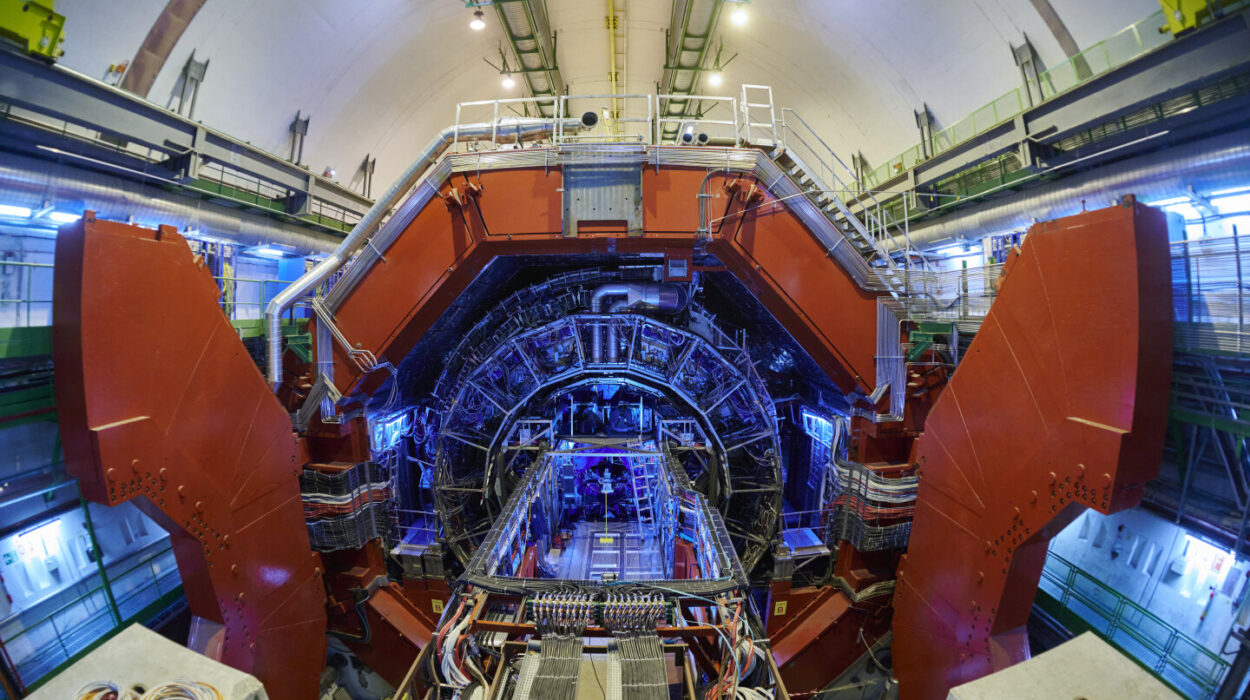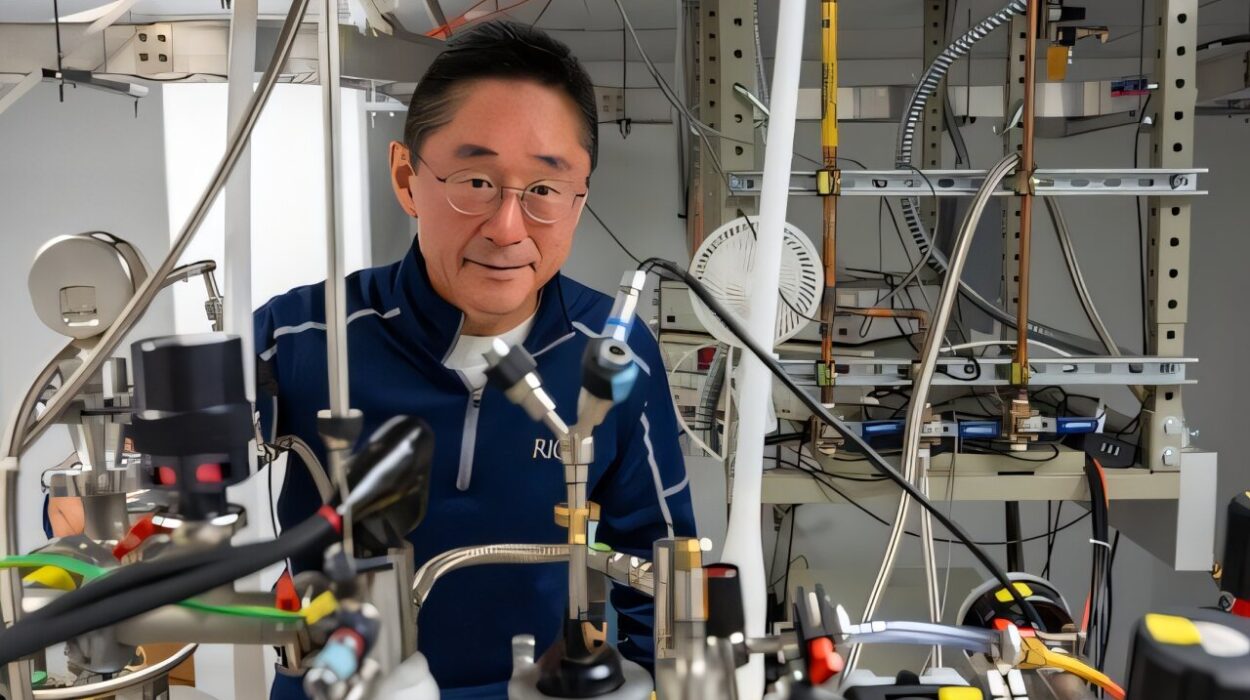In the realm of atoms, where materials behave in ways that often defy intuition, scientists have just uncovered a powerful secret hidden inside one of the thinnest metal oxides ever created.
At the University of Minnesota Twin Cities, a team of researchers has found a way to induce magnetism in ruthenium dioxide (RuO₂)—a material long considered a metallic, yet stubbornly nonmagnetic compound. And they did it using layers so thin, they measure just a few atoms across.
Their discovery, detailed in the Proceedings of the National Academy of Sciences, could accelerate the rise of ultra-fast, energy-efficient technologies—ones that don’t rely on traditional electronics but instead use the spin of electrons, ushering in a new era of spintronics and quantum computing.
From Ordinary to Extraordinary: A Metal That Shouldn’t Be Magnetic
For decades, ruthenium dioxide has held a curious reputation. Known as one of the most metallic oxides in existence, it conducts electricity remarkably well, rivaling even elemental metals. But magnetism? Not a trace—at least, not until now.
The turning point came when the Minnesota team used a sophisticated technique called hybrid molecular beam epitaxy to grow ultra-thin films of RuO₂ on a substrate. In this process, beams of atoms are deposited with exquisite precision, layer by atomic layer.
Then came the twist—literally. By applying epitaxial strain to the films, they gently stretched or compressed the atomic lattice, like tuning the tension in a microscopic rubber band. This subtle manipulation unlocked something hidden deep within the material’s structure: magnetism.
“Our work shows that RuO₂ is not just metallic at the atomic scale—it’s the most metallic oxide we’ve ever seen, rivaling even the best 2D materials, second only to graphene,” said Bharat Jalan, lead author and professor of chemical engineering and materials science. “What’s more exciting is that this is one of the first experimental demonstrations of an altermagnetic state in ultra-thin RuO₂.”
What Is Altermagnetism—And Why Should You Care?
Altermagnetism is a newly emerging concept in condensed matter physics, offering a fresh perspective on how magnetism can manifest in materials that don’t behave like typical ferromagnets.
Unlike ferromagnets—where all electron spins align in the same direction—or antiferromagnets, where they cancel each other out, altermagnets offer a kind of in-between behavior. They allow for spin-polarized transport (essential for spintronics), but without the usual magnetic ordering that creates interference or energy loss in devices.
This means materials like ultra-thin RuO₂ could retain key magnetic properties without some of the downsides of conventional magnets. In the race to build faster, cooler, and smarter electronics, this is no small advantage.
A Billionth of a Meter That Could Change Everything
One of the most remarkable aspects of this study is how little material is needed to see these effects. The researchers observed clear magnetic behavior in films just two unit cells thick—that’s less than a billionth of a meter.
Despite their extreme thinness, these layers stayed remarkably stable and metallic. Even more impressively, the team detected a phenomenon called the anomalous Hall effect, where electrons veer off-course in a magnetic field. This behavior is crucial for data storage and memory technologies.
“In bulk RuO₂, you’d need extreme magnetic fields to see something like this,” explained Seunnggyo Jeong, a postdoctoral researcher and the paper’s first author. “But here, we’re seeing it in ultra-thin films and with much weaker fields. That’s a huge leap forward.”
This effect could make devices more compact and energy-efficient, particularly in fields like artificial intelligence, where fast and reliable memory is king.
From Fundamental Science to Functional Devices
Beyond the thrill of discovering something new about the quantum world, the implications are deeply practical. These findings suggest that atomically thin RuO₂ could be directly integrated into future chips and memory architectures—especially those built for spintronic applications, which rely on manipulating electron spin instead of just charge.
“We’re looking at a material that doesn’t just exist in a lab—it can be part of real devices,” Jeong emphasized. “This discovery isn’t years away from being useful. It’s right on the edge of practical integration.”
By precisely controlling the strain and layering of the material, researchers can tweak its properties at will, tuning it like a nanoscale instrument to perform specialized functions.
“Our calculations confirmed that strain changes the internal structure of RuO₂ in just the right way to make this altermagnetic behavior possible,” added Tony Low, a co-author and professor of electrical and computer engineering.
A Roadmap for the Future of Computing
The Minnesota team isn’t stopping here. Their roadmap includes deeper exploration into how atomic-scale engineering—through strain, layering, or even chemical doping—can unlock entirely new classes of quantum materials.
These are not just academic curiosities. They are essential stepping stones in the quest to develop smaller, smarter, and more energy-efficient technologies. As classical computing approaches its physical limits, new paradigms like spintronics and quantum computing are becoming not just promising alternatives, but urgent necessities.
The dream? Devices that operate at blazing speeds with a fraction of the energy required today. Chips that can process data by controlling spin, not just charge. Memories that never lose information even when the power goes out.
And at the heart of this revolution, perhaps, will be a material that defied its nonmagnetic reputation, transformed by the quiet pressure of atomic strain.
Final Thoughts: Rewriting the Rules of Magnetism
This discovery serves as a powerful reminder of the untapped potential hidden in the nanoscale world. A metal once thought to be static and unremarkable has revealed a dynamic new identity, all because scientists dared to stretch it—literally—and look again.
In doing so, they’ve not only changed what we know about ruthenium dioxide, but opened a window into the future of computing itself.
“In materials science, the most exciting breakthroughs often come from asking, ‘What if?’” Jalan said. “What if we apply strain? What if we make it thinner? What if we go beyond the limits we assumed were there?”
This time, those questions led to a discovery measured in atoms—but with implications that could echo across the digital world.
Reference: Seung Gyo Jeong et al, Metallicity and anomalous Hall effect in epitaxially strained, atomically thin RuO2 films, Proceedings of the National Academy of Sciences (2025). DOI: 10.1073/pnas.2500831122






